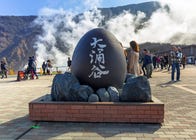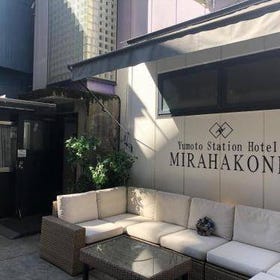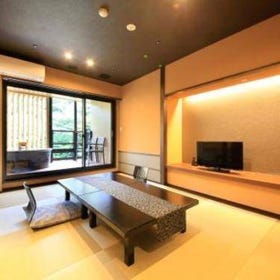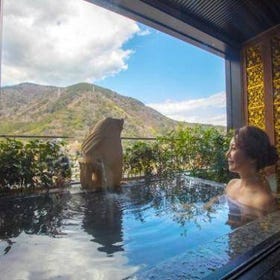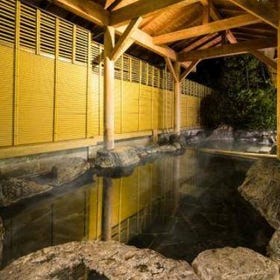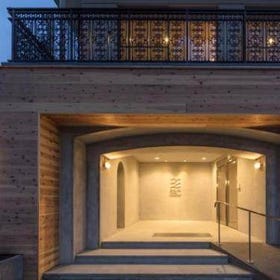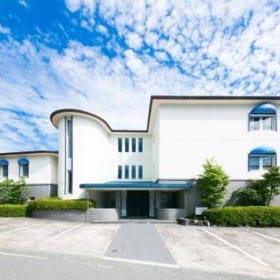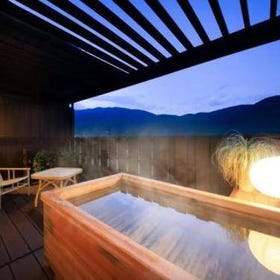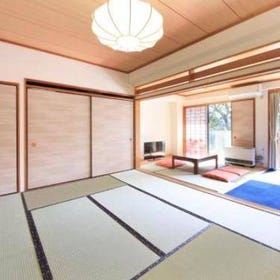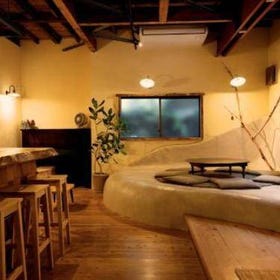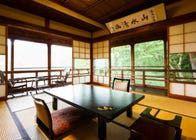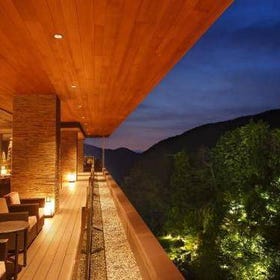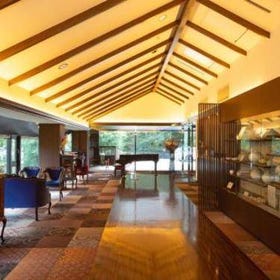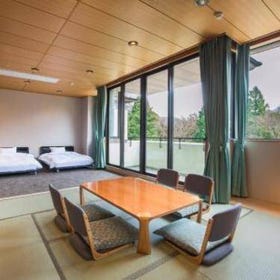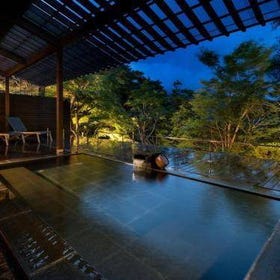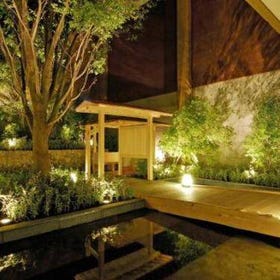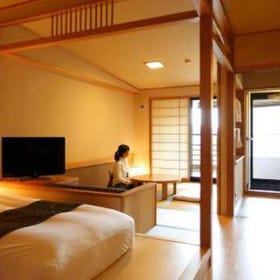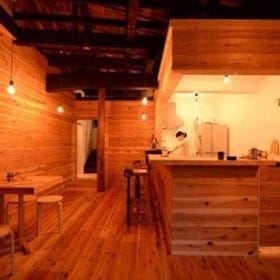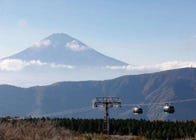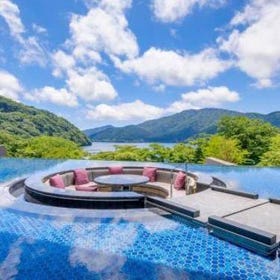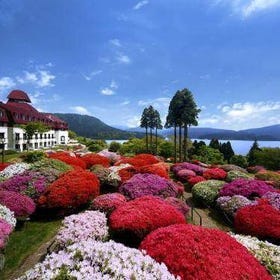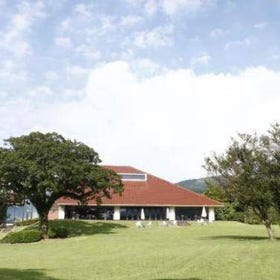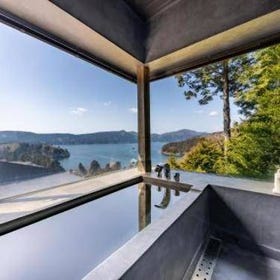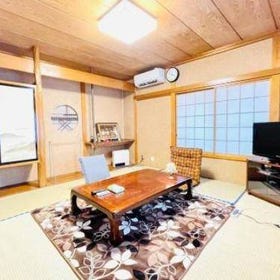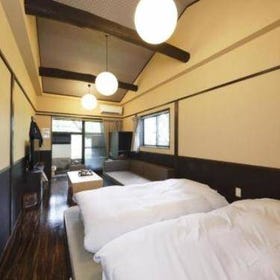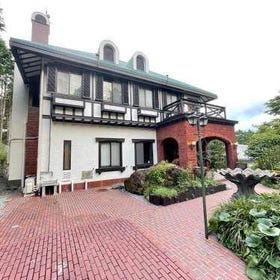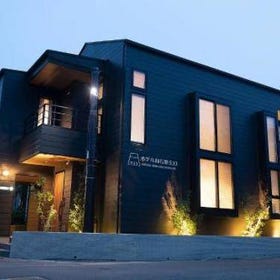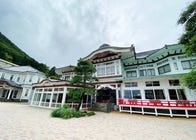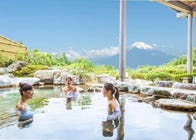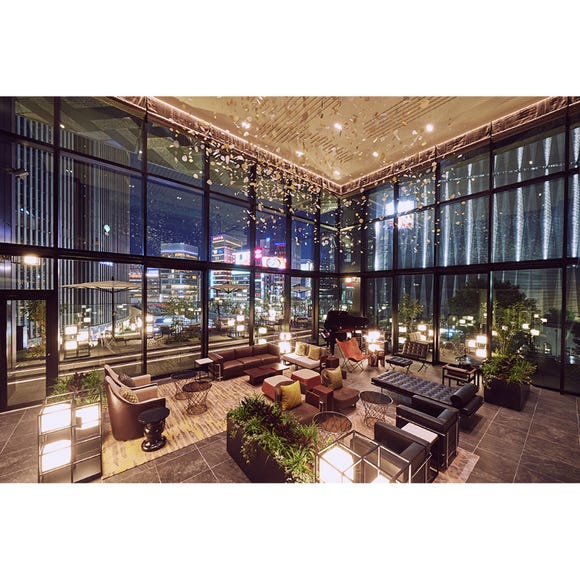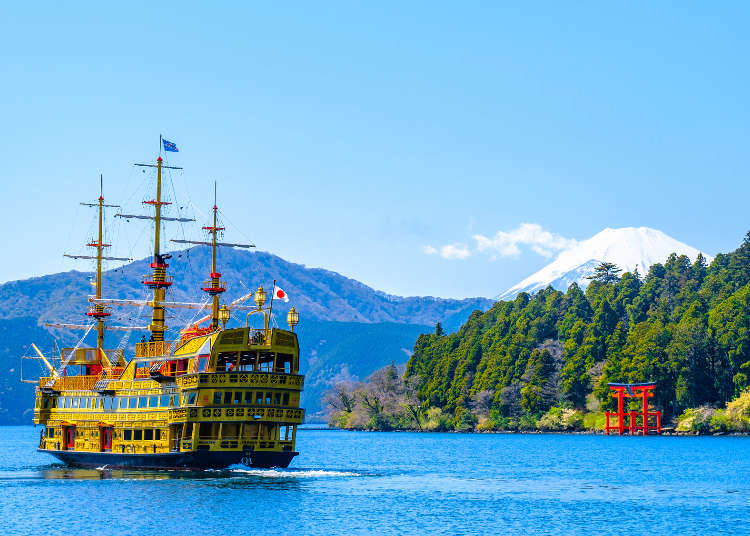
Discover where to stay in Hakone and experience the ultimate hot spring vacation in Japan. Enjoy soaking in onsen hot springs while enjoying breathtaking views of Mount Fuji and exploring art museums that perfectly blend with nature.
This guide provides recommendations for 30 highly-rated hotels, organized into five different regions, making it easy for you to find the perfect stay. Additionally, it shares the best times of year to visit, so you can fully appreciate the area's beauty.
Main image: PIXTA
Key points to selecting your Hakone hotel
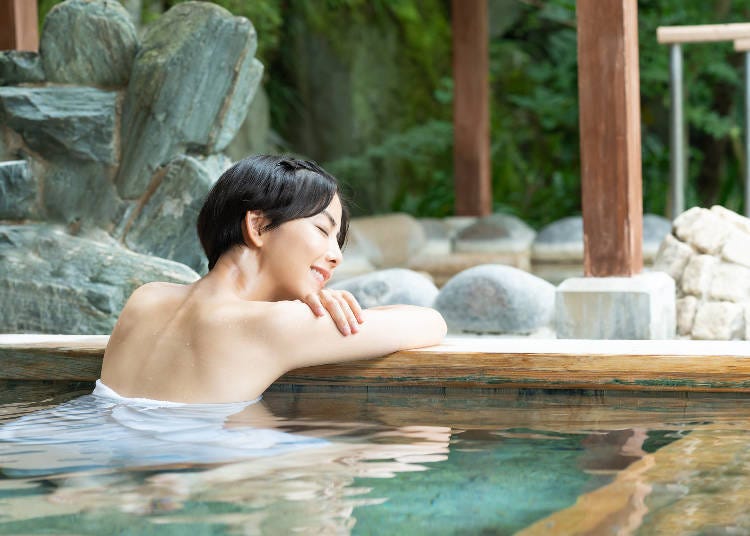
Room type and layout
Most of the accommodation options in Hakone are hotels that come equipped with hot spring facilities, and there are also a few traditional Japanese-style inns (known as ryokans) available.
Before making a reservation, make sure to check whether the room you're booking is designed in a Western or Japanese style. This is a crucial factor to consider because Japanese-style rooms have futons placed on a tatami mat instead of beds, and not everyone is comfortable with this kind of sleeping arrangement.
In case you're not accustomed to Japanese-style rooms, it's important to book a room with a Western layout. Additionally, it's worth noting that it's not permitted to wear any sort of clothing or swimwear when using public baths in Japan.
If privacy is a concern, you can also rent private bathing facilities for exclusive use. This option is definitely worth exploring if you value your privacy.
Location, environment, and style
When visiting Hakone, you'll find that most of the hotels are located either near a train station or a tourist attraction. This makes it very convenient for you to book accommodations that are in close proximity to the places you plan to visit during your stay.
For instance, if accessibility and shopping opportunities are important to you, then you will enjoy staying at any of the hot spring facilities located near the marketplace close to Hakone-Yumoto Station.
On the other hand, if you're looking to escape the hustle and bustle of the city and connect with nature, then you may prefer accommodations in Kowakudani and Lake Ashi where you can experience some peace and quiet.
To ensure a smooth trip, it's advisable to plan ahead and decide on the attractions you want to visit before looking for accommodations nearby.
Accessibility of hotels
As previously mentioned, most hotels in Hakone are situated near train stations. However, there may still be some walking required between the station and your accommodations, which could include difficult terrain like uphill climbs. This is important to keep in mind especially if you have luggage to wheel around.
If you're considering a more remote resort, it's worth checking if they provide shuttle bus services for guests between the hotel and a train station.
Accessibility of other attractions in Hakone
Since there are so many places of interest in Hakone, you may be pleasantly surprised to find one or two located within a stone's throw from an accommodation on your list of potential places to stay that you haven't already looked into.
Besides that, it would help to check how connected your preferred hotel is to the regions and attractions on your itinerary, whether via bus, bicycle, or on foot.
Free and easy traveling is not without its drawbacks, but the sense of satisfaction that comes from seeing all your advance planning coming together smoothly can be hard to beat!
Best areas to stay in Hakone & Recommended hotels
Now let's take a closer look! Here are five accessible and convenient areas where you'll find satisfying accommodations for all types of preferences.
They are roughly grouped into Hakone-Yumoto, Gora, Kowakudani, Lake Ashi, and Sengokuhara.
You'll get to know the area's distinct features and accommodations we highly recommend. We're confident this will be a good list to refer to for your next trip to Hakone!
1. Hakone-Yumoto Area Hotels
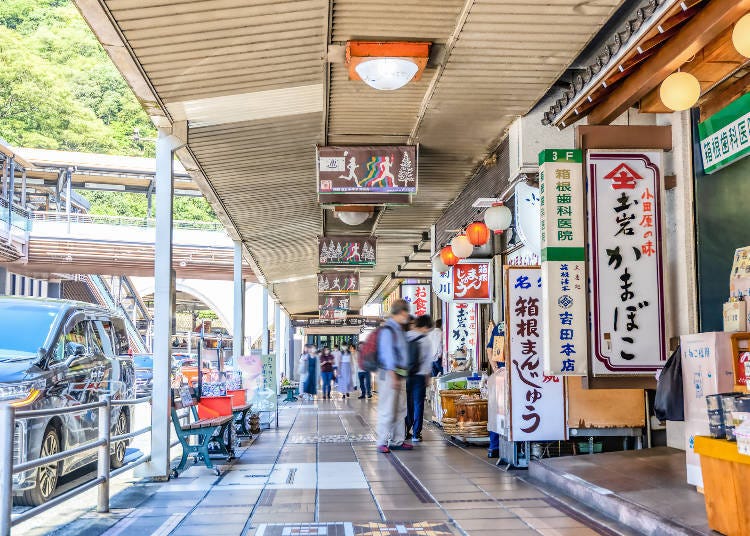
One of the top hot spring resort areas in Japan, Hakone-Yumoto is located in Fuji Hakone Izu National Park and also Hakone's foremost attraction.
In its center is the Hakone-Yumoto Station which is surrounded on all sides by many hot spring hotels, facilities, and gourmet restaurants along the shopping street.
From Shinjuku in Tokyo, it only takes about two hours to reach via the Odakyu Romancecar, making it a suitable day trip from the city center for families and single travelers alike.
- Convenient - only 1 to 2 hours by train from Tokyo; Around 2 hours via highway bus
- Surrounded by mountains; Scenic sights every season; Hakone Tozan Cable Car; Hakone Ropeway
- One of the oldest hot spring resorts in Japan with 1,200 years of history; Many hot spring facilities in the area have rooms or allow day trips
- Vintage vibe mixed with natural sights for great relaxation
- More than 40 hot spring facilities near the station; Shopping street filled with eateries, restaurants, cafes, souvenir shops, traditional hot spring inns, and traditional confectionery stores
Recommended Places to Stay in Hakone-Yumoto
Hotels
2. Gora Area
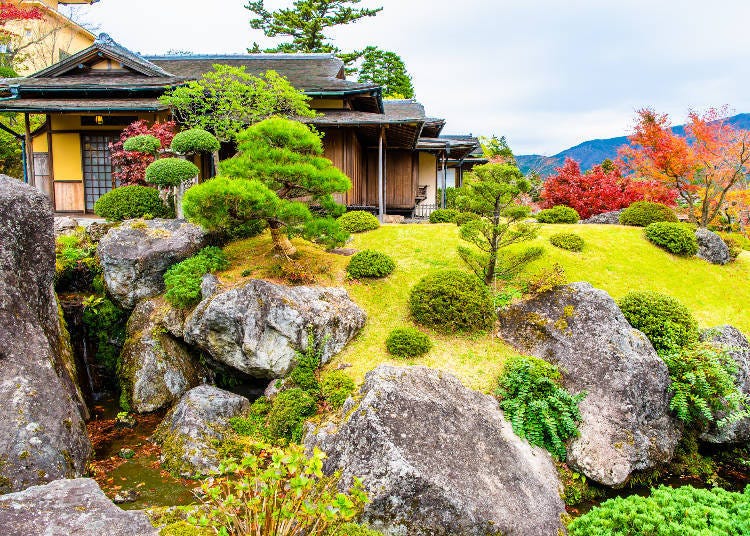
Another one of Hakone's numerous hot spring zones, Gora is also known as the "Multicolored Hot Spring Village" due to the colorful spring waters here - the result of different types of water quality and components. Gora Station - closely connected to Hakone Yumoto Onsen - is surrounded by a bewildering array of shops to for you to peruse at leisure.
Many luxury hot spring resorts can be found here as well, tucked away in nature's finest greenery, offering you respite from the busy concrete jungle life. Since it only takes about an hour or two to reach Gora via railway train, travelers looking for an authentic hot spring trip with all the bells and whistles can definitely consider some of the accommodations located in this area.
- Only 1 to 2 hours by train from Tokyo - take the Odakyu Romancecar to Hakone-Yumoto Station, then transfer to the Hakone Tozan Cable Car
- Convenient access to Sounzan Station and Lake Ashi's Togendai Station, transit stations for the Hakone Tozan Cable Car and Hakone Ropeway
- Situated between Owakudani and Kowakudani, next to Chokoku-no-mori Station; Sightseeing a breeze with the Hakone Tozan Cable Car and Hakone Ropeway
- Plenty of hot spring facilities, especially top-grade traditional Japanese ryokan such as Gora Kadan, which has housed Japanese royalty before
- Gora Park, The Hakone Open-Air Museum; Gourmet food around the station such as Tamura Ginkatsutei, famous for its tofu pork chops
Recommended Accommodations in Gora
Hotels
Hostel
3. Kowakudani Area
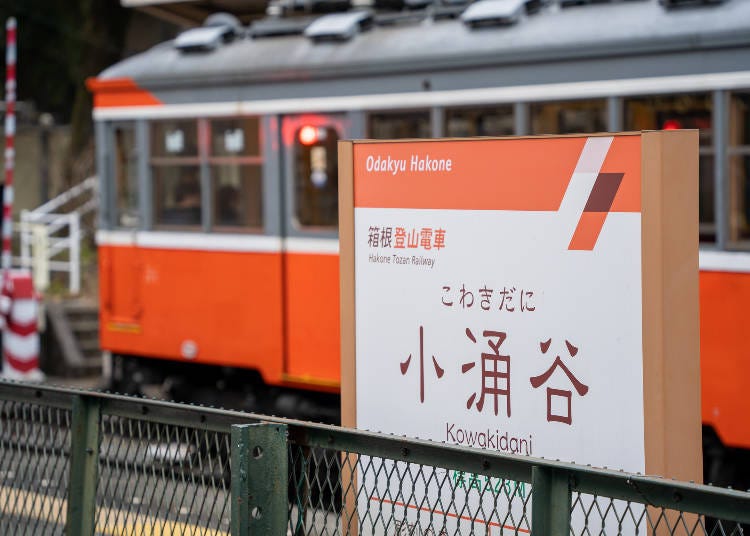
This district is right next to Gora and about half an hour from Hakone-Yumoto Station by train or 20 minutes by bus. Even if you were setting off from Tokyo, it takes only about 1 to 2 hours to reach Kowakudani.
Many places of interest are quite a distance away from Kowakidani Station, to the extent that yet another train trip is needed, but this also means that you'll be able to enjoy lush and expansive natural sights very near the station as well as from hot spring facilities in the area.
- Hakone Tozan Cable Car Kowakidani Station; 31-38 minutes to Hakone-Yumoto Station; 6 minutes to Gora
- Mikawaya Ryokan, a traditional Japanese hot spring inn with 100 years of history; Kowakien Yunessun, where guests are allowed to soak in their hot springs in swimwear; Okada Museum of Art; Chisuji Falls, a multilayered waterfall, and many more
- Generally untouched environments; Refreshing smell of nature; Changing scenery throughout the seasons; Highly recommended for city dwellers looking for an escape or retreat
Recommended Accommodations in Kowakudani
Hotels
Hostel
4. Lake Ashi Area

One of the most iconic sightseeing spots in Hakone, Lake Ashi is a quick and convenient 1 to 2 hour train ride from Tokyo. Right behind the wide and spacious lake is the majestic Mount Fuji.
As you might expect, the tourism industry here is very much alive and you'll find plenty of hot spring facilities, shops, restaurants, and other amenities located near the lake.
Hop on the Hakone Sightseeing Cruise designed to look like a pirate's ship and sail through the waters of Lake Ashi to find untold treasures in the form of unique picture opportunities and unforgettable memories! There's a reason why almost every visitor to Hakone has gone on the ship at least once!
- Only about 1 to 2 hours from Tokyo - take a train to Hakone-Yumoto Station or Odawara Station and transfer to the Hakone Tozan Railway or Hakone Tozan Bus
- Clear lake waters surrounded by beautiful scenery; Mount Fuji visible on a good day; Rooms overlooking the lake available in our recommended accommodations
- Lake Ashi; Hakone Shrine; Hakone Sekisho; Narukawa Art Museum, and many other places of interest
- Plenty of popular restaurants and hot spring hotels, such as Hakone Ashinoko Hanaori; Black bass and bass fish cuisine; Hot Springs and meals with a view
Recommended Accommodations around Lake Ashi
Hotels
Vacation homes, Villas
5. Sengokuhara Area

This is one of the districts in Hakone located near Gotemba and can be accessed from Tokyo by first taking a train to Hakone-Yumoto Station, then transferring to a bus. You can also take a direct highway bus from Shinjuku for maximum convenience! The most well-known sight of the area is the large Pampas Grass Field. Throngs of tourists come here to admire the beautiful sight of golden grass waving in the breeze every autumn. The hot springs here are nestled within similarly stunning sights and luxury hot spring inns and facilities can be found at almost every turn. Families with children looking for a relaxing break from their usual activities will especially enjoy the serene mood Sengokuhara puts everyone in.
- Large variety of natural sceneries; Sengokuhara Wetland Plant Community; Near Lake Ashi's Togendai Port for lakeside sightseeing
- Hakone Venetian Glass Museum; Hakone Lalique Museum; Pola Museum of Art; Hakone Botanical Garden of Wetlands, and others
- Plenty of tasty cuisine to try around places of interest, including Italian, bakeries, coffee shops, and other restaurants
- As attractions tend to be Western-style museums, galleries, and parks, restaurants serve Western fare and confectionery as well
Recommended Accommodations in Sengokuhara
Hotels
Vacation homes, Villas
Types of Accommodations in Hakone
As a popular hot spring destination, Hakone has a wide selection of hotels with related facilities, and we'll be listing out some accommodation types below along with their unique features for your reference. Since many of these places come with rustic Japanese-style hot spring facilities for guests to soak in, don't forget to arrange for some relaxation time in the pools if you intend to stay overnight in one of them!
Hotels
The majority of accommodations in Hakone are hotels such as resort hotels and business hotels, although you'll also find unique premium hotels that are usually located in the middle of vast swaths of untouched nature and offer public baths overlooking these scenic views. Some hotels even have suite rooms with an attached private hot spring! Needless to mention, the food served by these top-grade hotels are prepared with meticulous care for maximum enjoyment. If you're ever in the mood to splurge, treat yourself to one of these luxurious hotels and see for yourself what the hype is all about!
Apartment-style hotels, chartered houses, villas
The biggest difference between these accommodations and a regular hotel is that the room or house usually comes with an attached kitchen or common cooking area as well as eating utensils so that guests can do their own cooking. Usually big enough to house between two to eight persons, it's no wonder why large travel groups or family groups very much prefer to go for this type of housing on their trips. Having your own space also means you wouldn't be afraid of disturbing other guests sharing the same space. What's more, these accommodations in Hakone usually come with their own bathing or hot spring pools as well. Perfect choice for the privacy-conscious!
Japanese-style ryokan / hot spring resorts
You would expect to see plenty of old-time Japanese-style hot spring resorts with established reputations in Hakone, being that it's a historic area for hot springs, and you would be right! True to their native roots, the rooms in such accommodations usually feature tatami mats and come with Japanese course meals that are served either in the room itself or at the hotel restaurant. After returning from a nice and refreshing soak at the hotel hot spring, you'll find futons already carefully laid out on the floor for you by ryokan staff, and now all you have to do is nestle in and be enveloped by the warmth of your bath and the hospitality shown. A good night's rest won't be hard to come! These days, many ryokan also offer Western style rooms for those not used to sleeping on the floor futons, so don't forget to specify your preference when making your booking.
Hostels & Guest houses
Youth and backpacker hostels in Hakone differ greatly from all other accommodations mentioned above in that they only provide guests with a place to sleep, though many such hostels are also situated near public hot spring facilities guests can make use of. Travelers who are big on savings can thus enjoy the renowned spring waters of Hakone without busting their budgets. However do note that most visitors to Hakone come prepared to spend, so there are comparatively fewer such youth and backpacker hostels than hotels in the area. You may have to do a bit more research to locate one that fits your preferences!
When is the best season to visit Hakone?
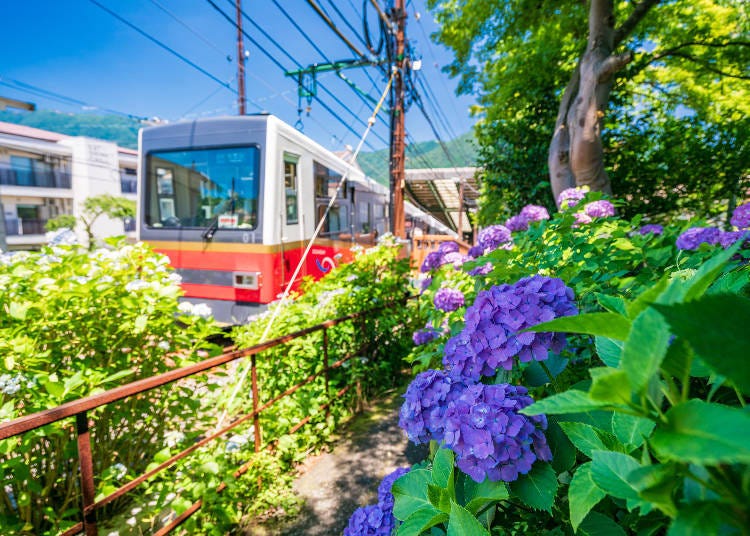
By now, you've likely deduced that Hakone is a popular tourist destination in the Kanto region, especially for its hot springs. That means you'll be fighting for space and accommodations with local tourists from Tokyo and other parts of Japan, such as Kansai, who have easy access to the area via the Shinkansen bullet train.
That's in addition to the many foreign tourists who come here in search of the authentic Japanese hot spring experience every year! The area is especially packed during the following months:
March
Sakura season in Hakone falls somewhere in March, and this naturally attracts oodles of visitors to the region wanting to admire the sakura and enjoy a good soak at the same time. This period is also spring vacation for Japanese students, and they're definitely taking advantage of their well-earned holiday to visit for some recreation!
August
Japan's Obon Festival week and vacation season are in August. Because the climate in Hakone is much cooler than in cities, many local tourists make arrangements to go to Hakone for a summer retreat. As a result, you'll find a lot of discounts and promotions being offered by hot spring accommodations during this season, so don't forget to do a bit more research to see if you can't get a better deal for your dream hotel!
October
Fall colors slowly bleed into the Hakone landscape starting in October. Because Hakone is such a popular viewpoint for fall foliage due to its mild and cool climate during this season, an astonishing number of people choose to visit Hakone around this period to relax in a hot spring surrounded by the beautiful sights of autumn.
This is most probably the most crowded Hakone will be throughout the year, and everything from transportation to accommodations will usually be fully booked way ahead of time. You can either avoid visiting Hakone during weekends and public holidays in October or plan early to ensure everything is in place before you set off!
I couldn't book the accommodations I wanted! What now?
Take a deep breath, relax, and stop worrying! Transportation to Hakone from outside the area is so readily available, whether train or bus, that you can easily arrange for a wonderful day trip to the region from within Tokyo city itself. Here's how!
Shinjuku
Shinjuku Station is where the terminal station for Odakyu Romancecar, a limited express with Hakone as one of the main stations is located, so if you can get accommodations within or near the area, you can set off bright and early in the morning to Hakone for a satisfying day trip. The journey is a direct trip that will take about 102 to 108 minutes. You don't have to worry about getting up from your seat to transfer trains at all. Talk about convenient!
For even more accessibility, consider getting the Hakone Freepass, a discount train pass covering the areas where the districts and attractions mentioned in this article are located and also allows access to the Odakyu Romancecar for an additional fee. Just imagine the savings on transportation, especially if your travel group is a big one!
What's more, having the pass gets you special discounts at designated shops. There are really not many reasons we can think of for not getting this pass if you already have your sights set on thoroughly enjoying as many attractions in Hakone as you can.
- Area
- Category
*Prices and options mentioned are subject to change.
*Unless stated otherwise, all prices include tax.
Popular Tours & Activitiess
Recommended places for you
-

[Extended Offer!](12% OFF KKday Coupon) Mt. Fuji Autumn Leaves, Powder Snow & More! 15 Best Tours to Experience Japan in Fall & Winter
-

The Best Japanese Food Representing 2025! 'Dish of the Year®' Annual Award Results Announced
-

Strawberries, Style, and Tokyo’s Coolest Neighborhood: Winter Afternoon Tea in Kichijoji
by: Guest Contributor
-

Simply Oishii Wagashi School Discover Japanese Culture Through Wagashi: A Hands-On Experience!
by: Guest Contributor
-

Keisei × Keikyu 16-Temple Goshuin Tour: Discover Deeper Tokyo & Yokohama
by: Guest Contributor
-

A Travel Game Changer! Go Hands-Free Between Tokyo and Kyoto with LUGGAGE EXPRESS by JTB and JR Tokai
by: Guest Contributor
Inspiration for Accommodations
-

Enjoy Mt. Fuji from the Comfort of Your Room! Recommended Ryokan with Mt. Fuji View
-

Stay Near the Cherry Blossoms! Hotels for Cherry Blossom Viewing in Tokyo
-

Family-Friendly Hotels with Free Shuttle to Disneyland: Convenient Access for a Magical Stay
-

Top Ranked Hakone Hotels with Mt. Fuji View: Enjoy Stunning Scenery from Your Private Space
-

Convenient Tokyo Hotels with Airport Shuttle: Ideal for Families and Heavy Luggage
-

Stunning Tokyo Tower View Hotels: Enjoy Spectacular Scenery from Your Private Space
-

Convenient Asakusa Hotels with Kitchens: Ideal for Extended Family Visits
-

Experience Luxury: Hakone's 10 Best Five-Star Accommodations
-

Enjoy Mt. Fuji Autumn Leaves! Top Hotels Near the Popular Autumn Leaves Corridor
-

Experience Hakone Fall Foliage from Your Room with Stunning Views
-

Easy Day Trip from Tokyo! Ultimate Sightseeing Guide for Hakone & Lake Ashinoko!
-

K-Pop Group SEVENTEEN Collabs With Tokyu Hotels: Check Out These Fun Accommodation Plans & Original Novelties!
-

Where You Should Stay in Ueno: Best Areas & 16 Hotels for First-Time Visitors
-

Now Vaccinated Guests Can Get Special Deals at Select Marriott Hotels and Prince Hotels in Tokyo
by: Ran Tanaka
-

16 Secrets About Mt. Fuji, the Symbol of Japan: Even Japanese People Don’t Know That?!
-

5 Recommended Hotels Near Shinjuku Station – Just 10 Minutes Away! Close to Kabukicho, Sights, and Convenient for Transfers
- #best ramen tokyo
- #what to buy in ameyoko
- #what to bring to japan
- #new years in tokyo
- #best izakaya shinjuku
- #things to do tokyo
- #japanese nail trends
- #what to do in odaiba
- #onsen tattoo friendly tokyo
- #daiso
- #best sushi ginza
- #japanese convenience store snacks
- #best yakiniku shibuya
- #japanese fashion culture
- #best japanese soft drinks













